We Go The Extra Distance For Our Clients
Practice Areas
Bone Fracture Injuries During Car Accidents
Broken or fractured bones caused by a car accident can quickly bury the crash victim in a mountain of debt and medical bills. If you’ve suffered a bone fracture injury during a car accident due to someone else’s negligence, you could be entitled to damages. Below, Sandy Springs personal injury attorneys at Ashenden & Associates, P.C. discuss all the ins and outs regarding broken bones and fractures, treatment options, and how you can pursue a personal injury claim. Call 770-394-8909 today to schedule a free consultation at Ashenden & Associates.
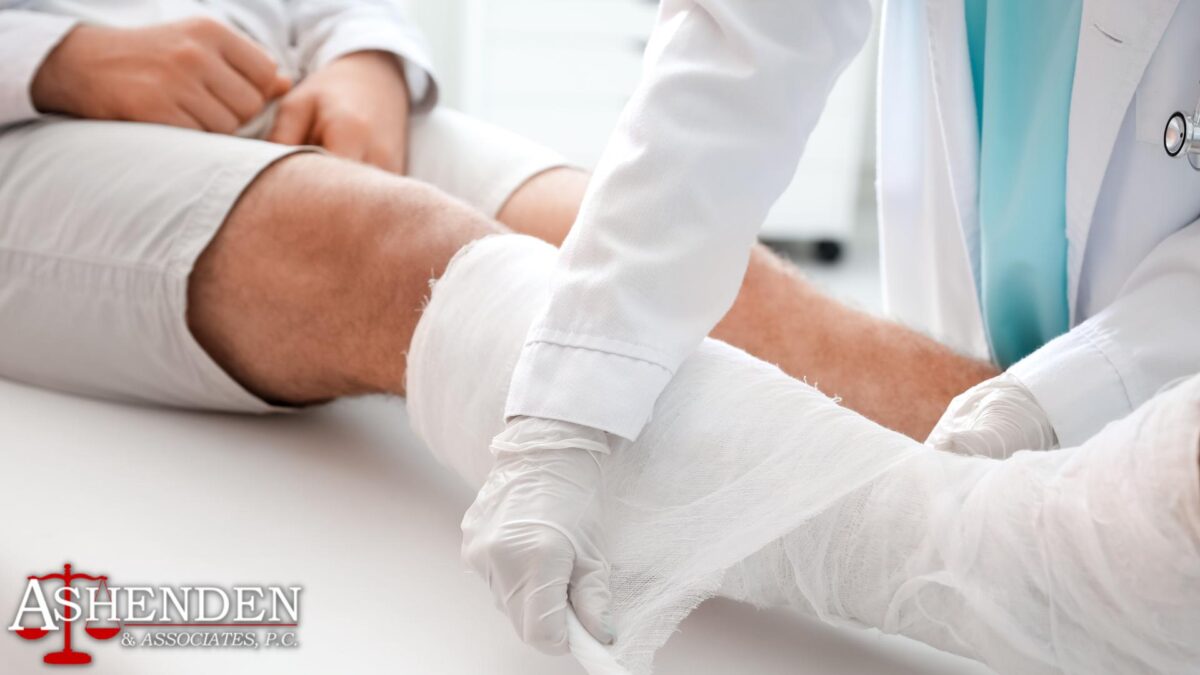
Bone Fracture vs. Broken Bone
There is no difference between a bone break and a bone fracture. It’s one of the most misunderstood medical terms behind cardiac arrest vs. heart attack. When the bone loses integrity, it’s considered a broken or fractured bone. If you’ve broken a bone, your doctor will diagnose you with a bone fracture, which is the medical term for a bone break.
Types of Broken Bones
Doctors will diagnose the type of bone break by evaluating the pattern of the break, the cause of the break, or where the bone is located in your body.
Fractured bones that are characterized by a complete break are:
- Oblique Fracture: A diagonal bone break. These fractures are most common in long bones.
- Longitudinal Fracture: When the bone breaks along the length of the bone.
- Transverse Fracture: Bones that break in a straight line across the bone.
Bones will either break in a straight or jagged line. Below are the broken or fractured bones resembling a jagged line.
- Greenstick Fracture: Partial fractures that occur when the bone bends and breaks but does not break into two separate pieces. This bone fracture injury is most common in children because their bones are more flexible and soft.
- Spiral Fracture: These are fractures that spiral around the bone. They are caused by twisting injuries, and the break can often resemble a corkscrew.
- Segmental Fracture: When the bone is broken in two places with a floating “segment” between. These fractures usually happen in long bones and often take longer to heal.
- Comminuted Fracture: A fracture in which the bone is broken in three or more places. Bone fragments are usually present in comminuted fractures. These fractures are usually caused by high-impact accidents and require a lengthy recovery.
Broken bones can also be diagnosed by the cause of the fracture.
- Stress Fractures are also known as hairline fractures. These tiny cracks in the bone can often be caused by repetitive stress and most commonly occur in the ankles and feet.
- Buckle Fractures are also known as torus or impacted fractures. They occur when the bone bends, creating a “buckle.” This fracture differs from the Greenstick Fracture in that while it does not completely break, it bulges out of place, almost like a bump on the bone.
- Avulsion Fractures occur when a small piece of bone attached to a ligament or tendon gets ripped away from the remaining bone.
Doctors can also diagnose the type of fracture depending on if it is visible through the skin.
- Open fractures, also known as compound fractures, break through the skin. They are visible to the naked eye. A compound fracture can also be a visible break due to an open wound.
- Closed fractures do not break the skin and are also known as simple fractures.
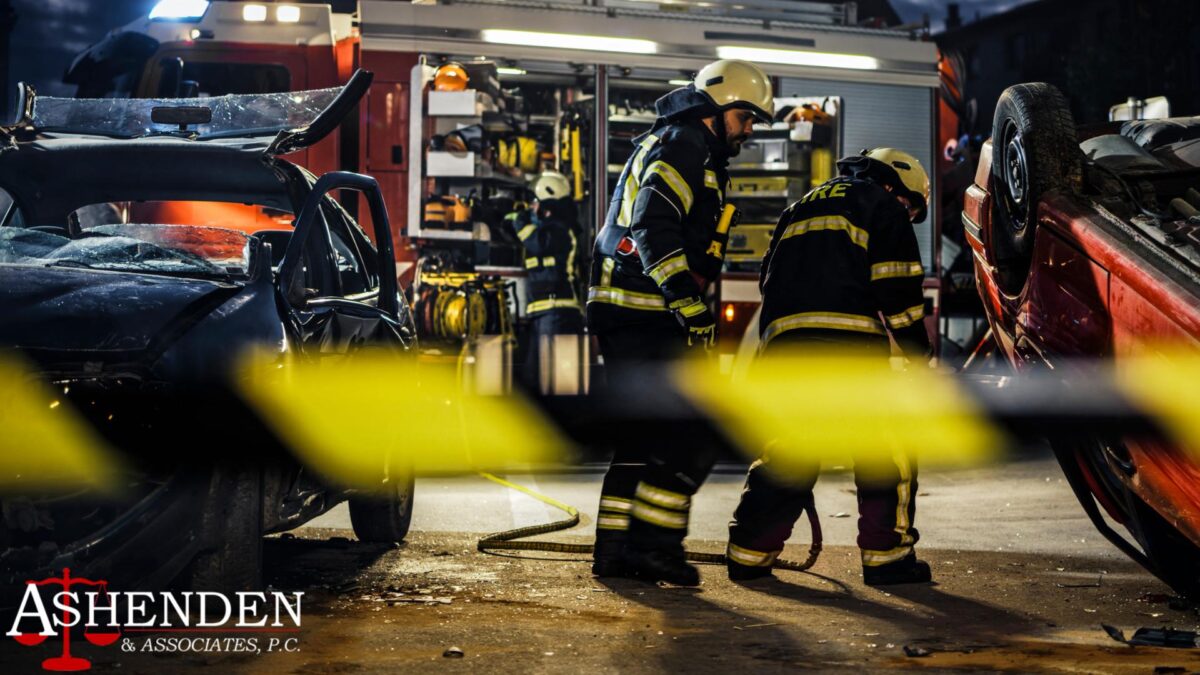
What Causes a Broken Bone During a Car Accident?
Despite all the safety measures that car and truck manufacturers have improved over the years, broken bone injuries still happen every day during car accidents. Below are some common causes of bone fractures during car wrecks.
- Being ejected from a vehicle or motorcycle.
- Hitting the steering wheel in a head-on collision.
- Being slammed forward while wearing a seatbelt.
- Crushing forces, such as being crushed by another vehicle or being crushed inside your vehicle.
- Bracing for impact by raising your arms to protect yourself from the blow of the airbags.
- Being struck by the airbag or loose items in the vehicle.
Most Common Broken Bones in Car Accidents
Any of the over 200 bones in your body can become fractured from a car accident injury. The most common bone fractures caused by a car accident are:
- Spinal Fractures can be caused by a rear-end or head-on collision. When the impact is severe enough, it can cause breaks in the vertebrae. Vertebral fractures are serious injuries and can sometimes be fatal.
- Skull and Facial Fractures occur when someone violently strikes their head on the windshield or steering wheel. Being struck by loose objects can also cause significant injury to the face or skull. Recently, there has been an increased awareness of skull injuries caused by wearing claw clips in the hair. Also, the impact of the airbags hitting the face can cause skull or facial fractures. Severe skull fractures can cause brain damage and other complications.
- Arm, Hand, and Wrist Fractures can occur when you try to brace yourself by reaching out in front of you. Bone fractures in the arm are common injuries from car accidents.
- Clavicle Fractures are quite common in car accidents. The clavicle bone is relatively thin, making it more susceptible to injury. Clavicle fractures can be caused by impact from the seatbelt or airbag.
- Pelvis and Hip Fractures most commonly occur in motorcycle accidents but can also be caused by serious car accidents. The pelvic bone is difficult to break but can be injured from the force of the seatbelt holding you in place. If you’ve sustained a hip fracture from an accident, you will most likely require surgery with plates, screws, and other hardware to help hold the bones in place while you heal.
- Sternum and Rib Fractures are most commonly caused by the seat belt holding you in place during a violent impact. These injuries can also be sustained by the airbag.
- Fibula and Femur Fractures: While the legs are some of the strongest bones in the body, they can be injured during car accidents. These fractures typically occur when you brace for impact, or the car crumples around you.
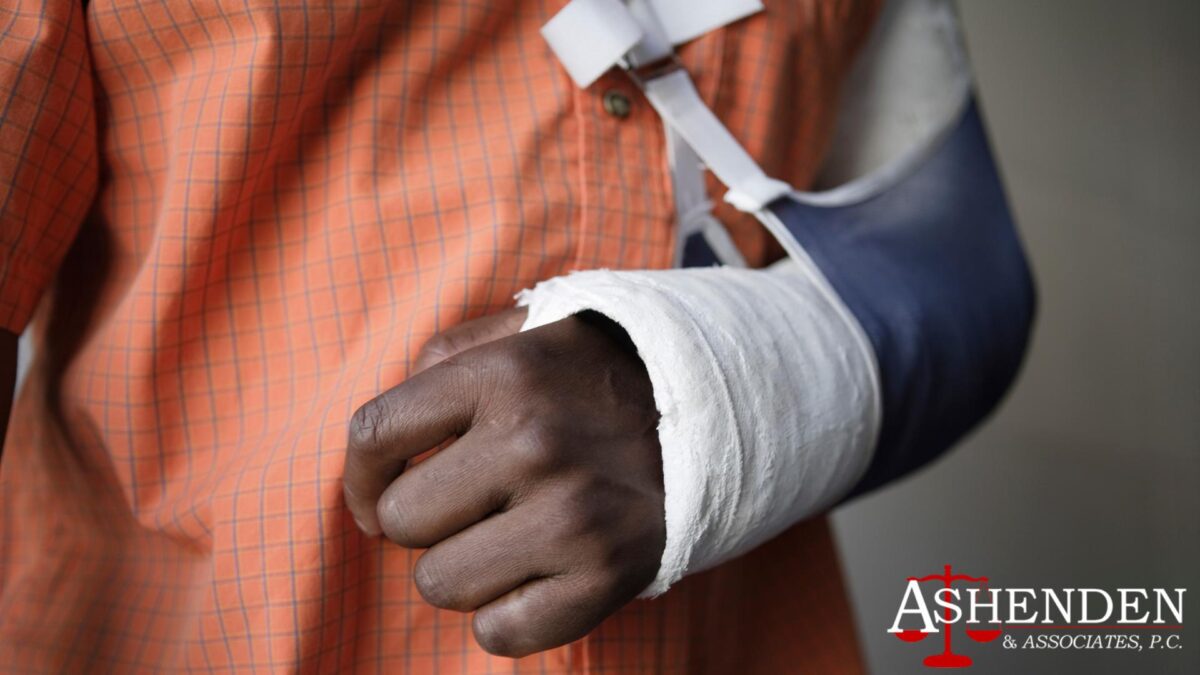
How Do I Know if I Have a Broken Bone After a Car Accident?
Following a car accident, it’s always recommended for you to receive medical treatment whether you believe you sustained any injuries or not. If you’ve suffered broken bones, you might be experiencing the following symptoms:
- Bone protruding through the skin (if it’s a compound fracture).
- Severe pain and tenderness around the affected area.
- Bruising or swelling around the fracture site.
- Inability to move the affected area, like bending the leg.
- Deformity around the affected area.
How Doctors Diagnose Broken Bones
A doctor will conduct a physical exam and imaging tests to diagnose the broken bone. You will most likely undergo an X-Ray to confirm any fractures and to see how severe the damage is. If there is suspected ligament or cartilage damage, your doctor might order an MRI or CT scan to get a complete picture of the bone damage and the surrounding area. Doctors can also request a bone scan that will show fractures that are not visible on X-Rays.
If you’re brought to the emergency room following your accident, the medical staff will conduct the exam and imaging there. Depending on the severity of your injuries, they will try to stabilize you before providing further treatment to confirm any fractures.
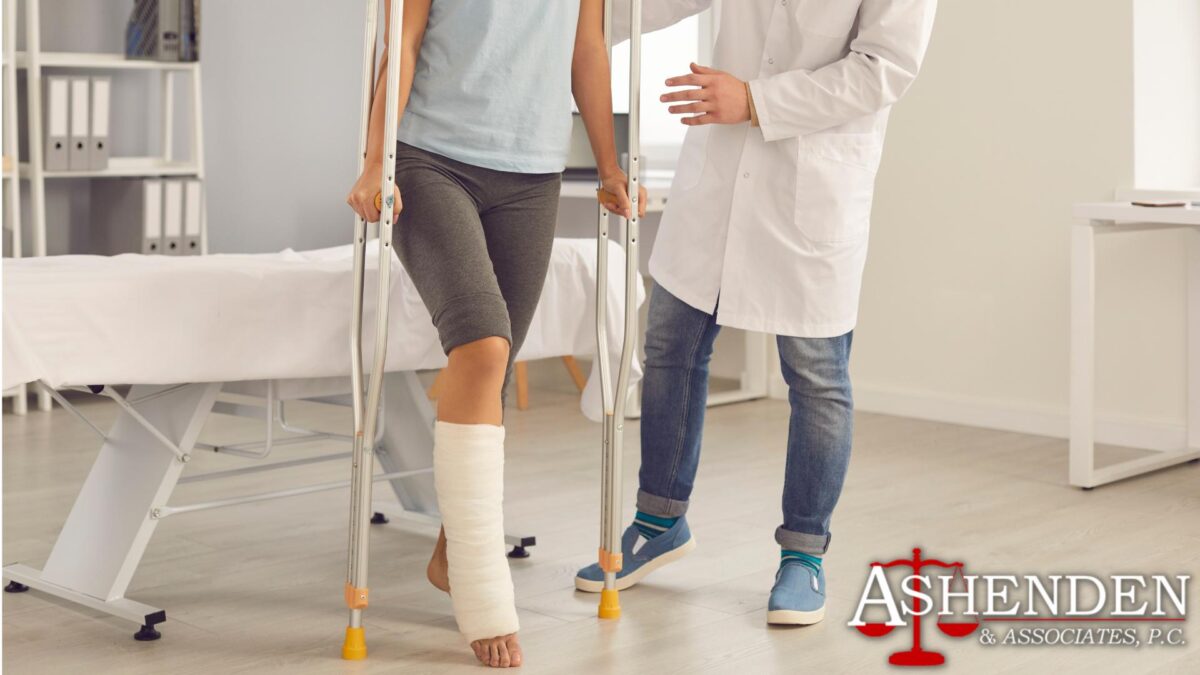
Treatment Options for Broken Bones After Car Accident
Medical treatment will be determined by the fracture type, what caused it, and how much damage the bones have sustained.
- Immobilization: If the bone fracture is mild and the bones did not move very far out of place (non-displaced), it may only require a splint or a cast. Splints typically last three to five weeks, while a cast can last up to eight weeks. Both scenarios will require X-Ray follow-ups to ensure the bone is properly healing.
- Closed-Reduction: More severe breaks will require a realignment of your bones. This is a non-surgical procedure where the doctor physically pushes and pulls your body to line up the broken bones. Since this is quite a painful procedure, patients will receive either local anesthesia, sedatives, or general anesthesia. Patients will usually be placed in a splint or cast after the closed reduction.
- Bone Fracture Surgery: More severe fractures will require surgery. The type of fracture and how severely the bones are damaged will determine the surgical techniques the surgeon uses. Internal fixation is when the surgeon realigns the bones and secures them in place with rods, plates and screws, or pins and wires so that they can heal and grow back together. The surgeon may also perform an external fixation where the screws are placed in the bone and then secured to a brace or bracket outside the body. The more extreme surgical options are bone grafting and arthroplasty.
- Bed Rest: Resting the fractured bone is crucial during recovery.
- Pain Medication is often prescribed following car accidents during the healing process.
- Physical Therapy is usually required for those that have suffered severe injuries that have required surgery and long-term bed rest. Physical therapy helps patients slowly use their injured limbs to return to normal activities.
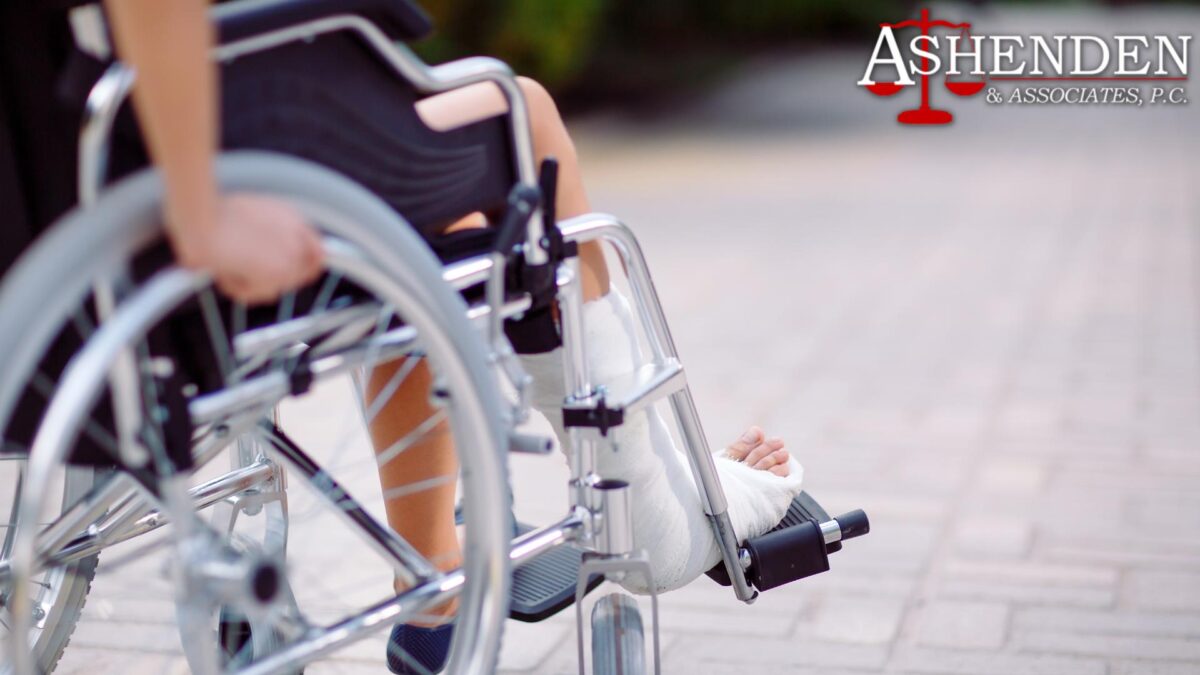
How Long Does it Take for a Broken Bone to Heal?
Several factors will determine the length of the healing process, including what caused the bone fracture, which bone is broken, what type of fracture it is, which treatment or treatments were needed, and any other injuries that were sustained. More severe fractures can take over a year to heal. During the healing process, discussing what you’re experiencing with your doctor is important.
Can You Sue for a Broken Bone From a Car Accident?
If you or a loved one suffered one or more bone fractures during a car accident, you may have grounds to file a personal injury claim. While auto insurance may cover medical costs for a mild fracture, more severe fractures can require extensive medical treatment. Those that have suffered severe injuries from a car accident can require multiple surgeries and physical therapy.
Damages for Broken Bones in Car Accidents
If you pursue a personal injury lawsuit due to the broken bone injuries that you or a loved one sustained from a car accident, you could be entitled to the following damages:
- Past and future medical expenses
- Past and future physical therapy bills
- Lost wages
- Physical pain and suffering
- Emotional distress


